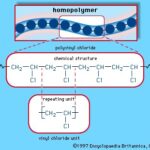Gynecomastia, often referred to as “gyno,” is a medical condition characterized by the enlargement of breast tissue in men and boys. This condition arises from an imbalance in hormones, specifically an increase in estrogen relative to testosterone. While gynecomastia is frequently not a serious health concern, it can lead to physical discomfort and emotional distress due to changes in physical appearance.
Alt text: Illustration depicting enlarged breasts in a man, visually explaining gynecomastia.
It’s important to differentiate gynecomastia from pseudogynecomastia. Pseudogynecomastia involves the accumulation of fat in the chest area, giving the appearance of enlarged breasts, but without the glandular tissue growth that defines true gynecomastia.
Gynecomastia can occur at various stages of life due to natural hormonal fluctuations, including in newborns, during puberty, and in older men. However, various other factors can also contribute to its development. In many instances, particularly in teenagers, gynecomastia resolves on its own. When it persists, medical treatments, including medication or surgery, are available.
Recognizing Gynecomastia: Symptoms to Watch For
Identifying gynecomastia involves recognizing specific symptoms that manifest in the breast area. These symptoms can vary in intensity and may include:
- Breast Pain or Tenderness: Discomfort, particularly common in adolescents experiencing gynecomastia, can range from mild to noticeable pain.
- Swollen Breast Tissue: A visible swelling of the breast tissue is a primary indicator. This may present as a rubbery or firm mass beneath the nipple and areola.
- Breast Sensitivity: The breasts, and especially the nipples, may become unusually sensitive to touch or pressure, sometimes causing discomfort when nipples rub against clothing.
When to Seek Medical Advice
It’s crucial to consult a healthcare professional if you observe any of the following symptoms, as they could indicate gynecomastia or other underlying health issues:
- New Swelling in Breast Tissue: Any unexplained swelling should be evaluated.
- Persistent Breast Pain or Tenderness: Ongoing discomfort warrants medical attention to determine the cause and appropriate management.
- Nipple Discharge: Fluid leaking from one or both nipples, known as nipple discharge, is not typical in gynecomastia and needs investigation.
- Presence of a Firm Lump: A hard or fixed lump in the breast area is a concerning sign that requires prompt medical assessment to rule out serious conditions.
- Skin Dimpling on the Breast: Changes in the skin texture of the breast, such as dimpling, should be checked by a doctor.
What Causes Gynecomastia? Exploring the Root Causes
Gynecomastia stems from a hormonal imbalance, specifically a shift in the ratio of estrogen and testosterone in the body. In males, testosterone is the predominant sex hormone, with estrogen present in smaller amounts. When the balance shifts, and estrogen levels become relatively higher than testosterone, gynecomastia can develop. This hormonal disruption can arise from several factors:
Natural Hormonal Shifts Throughout Life
Normal hormonal changes during different life stages are common causes of gynecomastia:
- Infancy: Newborn gynecomastia is frequent, affecting over half of male infants due to estrogen transfer from the mother during pregnancy. This typically resolves naturally within a few weeks.
- Puberty: Teenage gynecomastia is also common due to hormonal fluctuations during puberty. In most cases, this pubertal gynecomastia subsides without intervention within 6 months to 2 years.
- Adulthood: Adult-onset gynecomastia is prevalent, affecting a significant percentage of older men. As men age, testosterone levels naturally decline, which can contribute to gynecomastia.
Medication-Induced Gynecomastia
Certain medications can have gynecomastia as a side effect. These include:
- Anti-androgens: Used for prostate conditions, these drugs can interfere with testosterone’s action. Examples include finasteride and spironolactone.
- Anabolic Steroids and Androgens: Ironically, while intended to enhance male characteristics, misuse of these substances can disrupt hormonal balance and lead to gynecomastia.
- Antiretroviral Medications: Some HIV medications, particularly efavirenz, have estrogen-like effects that can cause gynecomastia.
- ADHD Medications: Stimulants containing amphetamines, like Adderall, are linked to gynecomastia in some individuals.
- Anti-anxiety and Antidepressant Medications: Certain medications like diazepam and tricyclic antidepressants are potential causes.
- Antibiotics, Opioids, and Ulcer Medications: Various drugs across these categories, including cimetidine and omeprazole, have been implicated in gynecomastia.
- Chemotherapy and Heart Medications: Treatments for cancer and heart conditions, such as digoxin and calcium channel blockers, are also on the list of potential drug-induced causes.
- Stomach-emptying medications: Metoclopramide, used to aid stomach emptying, is another medication associated with gynecomastia.
Recreational Drugs and Alcohol
Substance use can significantly impact hormonal balance and trigger gynecomastia:
- Alcohol: Excessive alcohol consumption can disrupt liver function and hormonal regulation, contributing to gynecomastia.
- Anabolic Steroids: As mentioned, these performance-enhancing drugs are a known cause.
- Amphetamines, Marijuana, Heroin, and Methadone: These illicit drugs can all interfere with hormonal systems and lead to gynecomastia.
Underlying Health Conditions
Certain medical conditions can create hormonal imbalances that lead to gynecomastia:
- Hypogonadism: Conditions like Klinefelter syndrome, which result in reduced testosterone production, are strongly linked to gynecomastia.
- Aging: Age-related hormonal changes, especially in overweight individuals, increase the risk.
- Tumors: Tumors affecting the testes, adrenal glands, or pituitary gland can secrete hormones that disrupt the estrogen-testosterone balance.
- Hyperthyroidism: An overactive thyroid gland can also affect hormone levels.
- Kidney or Liver Failure: Dysfunction of these organs can disrupt hormone metabolism and balance, leading to gynecomastia.
- Malnutrition and Starvation: Severe nutritional deficiencies can lower testosterone levels while estrogen remains stable, creating an imbalance.
Herbal Products
Some herbal products, particularly plant oils like tea tree and lavender oil found in personal care products, have been linked to gynecomastia. These oils contain compounds that may mimic estrogen or interfere with testosterone activity.
Gynecomastia Risk Factors
Several factors increase the likelihood of developing gynecomastia:
- Puberty and Older Age: These are periods of natural hormonal fluctuation.
- Obesity: Excess body fat can increase estrogen production.
- Anabolic Steroid Use: Performance-enhancing drug use is a significant risk factor.
- Certain Health Conditions: Liver disease, kidney disease, thyroid disorders, and Klinefelter syndrome all elevate risk.
Potential Complications of Gynecomastia
While generally not physically dangerous, gynecomastia’s main complications are often psychological. The altered chest appearance can lead to:
- Emotional Distress: Feelings of embarrassment, shame, anxiety, and low self-esteem are common due to body image concerns.
- Social Anxiety: Men with gynecomastia may feel self-conscious in social situations, particularly those involving undressing, like swimming or changing rooms.
Prevention Strategies for Gynecomastia
While not always preventable, certain lifestyle choices can reduce the risk of gynecomastia:
- Avoid Recreational Drugs: Steering clear of anabolic steroids, amphetamines, marijuana, and heroin is crucial.
- Moderate Alcohol Consumption: Limiting or abstaining from alcohol can help maintain hormonal balance and liver health.
If you are concerned about gynecomastia or notice breast enlargement, consulting a healthcare provider is the best course of action for diagnosis and personalized advice.

